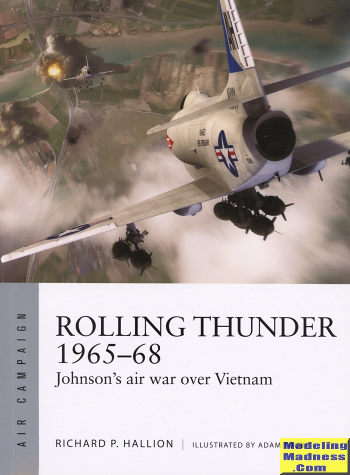 The Vietnam War
was one that the United States had no real intention of winning. It was started
under what was later discovered to be false pretenses based on an attack that
never happened. But worst of all, it was bungled from the very start, being run
by politicians half a planet away who were pretty much inept and clueless as to
the situation in theater. In fact, if you want to put the blame on one person,
that would be Robert McNamara, who was the Secretary of Defense at the time.
Sadly, it is a formula that we have seen repeated over and over again in some
extent or another in America's military operations since. It is as if no one
learned anything from the experience.
The Vietnam War
was one that the United States had no real intention of winning. It was started
under what was later discovered to be false pretenses based on an attack that
never happened. But worst of all, it was bungled from the very start, being run
by politicians half a planet away who were pretty much inept and clueless as to
the situation in theater. In fact, if you want to put the blame on one person,
that would be Robert McNamara, who was the Secretary of Defense at the time.
Sadly, it is a formula that we have seen repeated over and over again in some
extent or another in America's military operations since. It is as if no one
learned anything from the experience.
That formula was a gradual stepping up of the bombing
campaign in the north. It was felt that by limiting what was attacked, that it
would show the government of North Vietnam that it was in their best interest to
stop infiltrating South Vietnam and to stop supporting the Viet Cong. The cities
of Hanoi and Haiphong along with the surrounding air bases were considered
off limits and only specific targets could be attacked. What that did was to
allow the North to concentrate all of its anti-air weapons (guns and later SAMs)
in specific areas, increasing their chances of shooting down American planes.
They were actually quite successful at this and the number of planes shot down
by anti-aircraft was in the several hundreds by the time the campaign ended.
It also allowed the North Vietnamese Air Force the time
it needed to train pilots to fly the MiG fighters it had received from the
Soviet Union and China. Air to air combat is what gets the most press, but
actually, it was a very minor part of the air war in Vietnam. It was bombers
(F-105s, A-4s, A-6s etc) that took the brunt of the North's anti-aircraft. This
was not helped by the rather lightweight munitions being used at the time.
Bridge busting became a real challenge, especially those that were well built.
It wasn't until much later in the war that guided munitions were able to destroy
these targets. Prior to this, the hit ratio with 'dumb' bombs was very low. This
meant repeated attacks on the same target, which meant higher losses.
This book covers the campaign from the start until there
was a bombing halt against North Vietnam in 1968 that did not start up again
until nearly four years later, by which time, the job was so much more
difficult. Not surprisingly, it goes into the politics of the situation as much
as it does the evolving tactics used by both sides during this time. Thanks to
great period photos and the excellent art work and diagrams of Adam Tooby, we
get a very clear picture of what was then a rather muddled situation. A book
that will probably open your eyes and one that definitely makes you think. Well
worth picking up.
March 2018
Copyright ModelingMadness.com. All rights reserved.
For more on the complete line of Osprey books,
visit www.ospreypublishing.com .
If you would like your product reviewed fairly and quickly, please
contact
me or see other details in the
Note to
Contributors.
 The Vietnam War
was one that the United States had no real intention of winning. It was started
under what was later discovered to be false pretenses based on an attack that
never happened. But worst of all, it was bungled from the very start, being run
by politicians half a planet away who were pretty much inept and clueless as to
the situation in theater. In fact, if you want to put the blame on one person,
that would be Robert McNamara, who was the Secretary of Defense at the time.
Sadly, it is a formula that we have seen repeated over and over again in some
extent or another in America's military operations since. It is as if no one
learned anything from the experience.
The Vietnam War
was one that the United States had no real intention of winning. It was started
under what was later discovered to be false pretenses based on an attack that
never happened. But worst of all, it was bungled from the very start, being run
by politicians half a planet away who were pretty much inept and clueless as to
the situation in theater. In fact, if you want to put the blame on one person,
that would be Robert McNamara, who was the Secretary of Defense at the time.
Sadly, it is a formula that we have seen repeated over and over again in some
extent or another in America's military operations since. It is as if no one
learned anything from the experience.